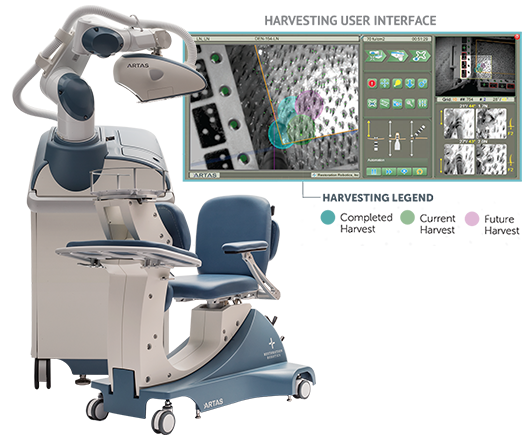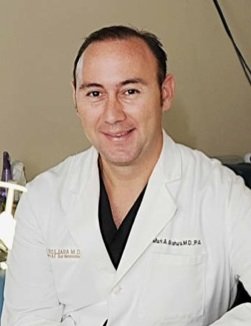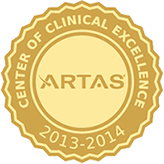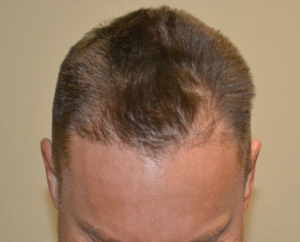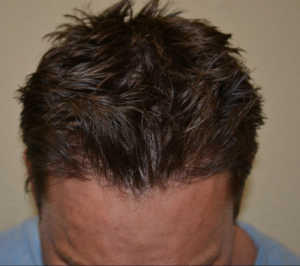How does the ARTAS Robotic Procedure work?
The ARTAS Robotic Procedure is a minimally invasive hair restoration solution that leverages digital imaging and precision robotics to harvest healthy grafts for transplantation. Unlike the earlier methods of hair restoration, there is no need for the surgical removal of a band of tissue from the back and sides of the head, no linear scar left after surgery and no need for stitches or staples to close the wound. The benefit is a quick recovery time and the ability to return to normal activities and work sooner.
Should I cut my hair before treatment?
Yes. Trimming your hair in the donor area allows the ARTAS Robotic System to accurately visualize, track and harvest each grouping of hairs. You will receive instructions on having your hair cut shorter in preparation for your ARTAS Robotic Hair Transplant.
How will my hair look after the ARTAS Robotic Hair Transplant?
The ARTAS Robotic Hair Transplant provides extremely natural looking results. After the procedure, you are able to wear your hair any length or style with confidence.
How is the ARTAS Robotic Hair Transplant different than “Hair Plugs”?
Old fashioned “hair plugs” included the harvesting of large patches of hair that resulted in an awkward and unnatural appearance once implanted. In the ARTAS Robotic Procedure, hairs are harvested in their natural groupings and then transplanted individually by your physician. Individual transplantation provides you with the look you desire, including a great looking hairline and a fuller head of hair.
Are ARTAS Robotic Hair Transplant results permanent?
Yes. The ARTAS Robotic Hair Transplant uses your own permanent growing hair, typically from the back of your head, and your physician then implants this hair to the thinning areas of your scalp. As this hair is not susceptible to the conditions that cause male pattern baldness, transplanted hair will last a lifetime.
How long does it take to recover and heal?
Recovery time with the ARTAS Robotic Hair Transplant is less than with most surgical cosmetic procedures. As there is no surgical incision or stitches required with the ARTAS Robotic Hair Transplant, healing time is short, and you can usually go back to your daily activities after a day or two. Some doctors schedule a follow up visit the morning after the procedure to examine your scalp and to teach you how to take care of your newly implanted hair.
When will my new hair start to grow?
Transplanted hair grows naturally in phases. New hairs are seen about three months after the procedure, and will continue to increase over the course of a full year. At approximately six months, you will enjoy a noticeable improvement and after a full year, you will see final results.
Will people know I have had a hair transplant procedure?
With the ARTAS Robotic Hair Transplant, any scarring is minimal and is nearly undetectable. Your new hair grows in gradually, reducing the chance that people will notice the procedure. Your friends and family will comment that you look better, but the results from your hair transplant are subtle and natural.
Does the ARTAS Robotic Hair Transplant procedure hurt?
The ARTAS Robotic Hair Transplant, an outpatient procedure performed in the doctor’s office, requires only a local anesthetic. The patient feels virtually no pain. Some patients can experience minor discomfort and swelling post-procedure, which subsides in one to three days.
Will there be visible scarring in the donor area?
Because the ARTAS Robotic System selectively harvests individual hair groupings rather than removing a large area of scalp requiring sutures, there is minimal scarring in the donor area. Hair can be worn fashionably short, or in longer styles, whatever you prefer. You’re not limited by having to cover scarring from strip surgery.
What is the price of the ARTAS Robotic Hair Transplant?
Treatment costs will be determined during your consultation with your doctor and depend on the amount of new hair that you desire. Discuss the procedure pricing with your doctor, as some doctors may offer payment options.
How long does the ARTAS Robotic Hair Transplant procedure take?
The ARTAS Robotic Hair Transplant usually takes from four to eight hours as determined by your doctor to achieve your hair restoration goals. You are comfortably seated during the process, and the doctor and staff are there with you to maximize your comfort throughout the procedure.
[calltoaction]To learn more about our Robotic Hair Transplant Services, please contact us at (817) 473-2120 today to schedule an appointment.[/calltoaction]

